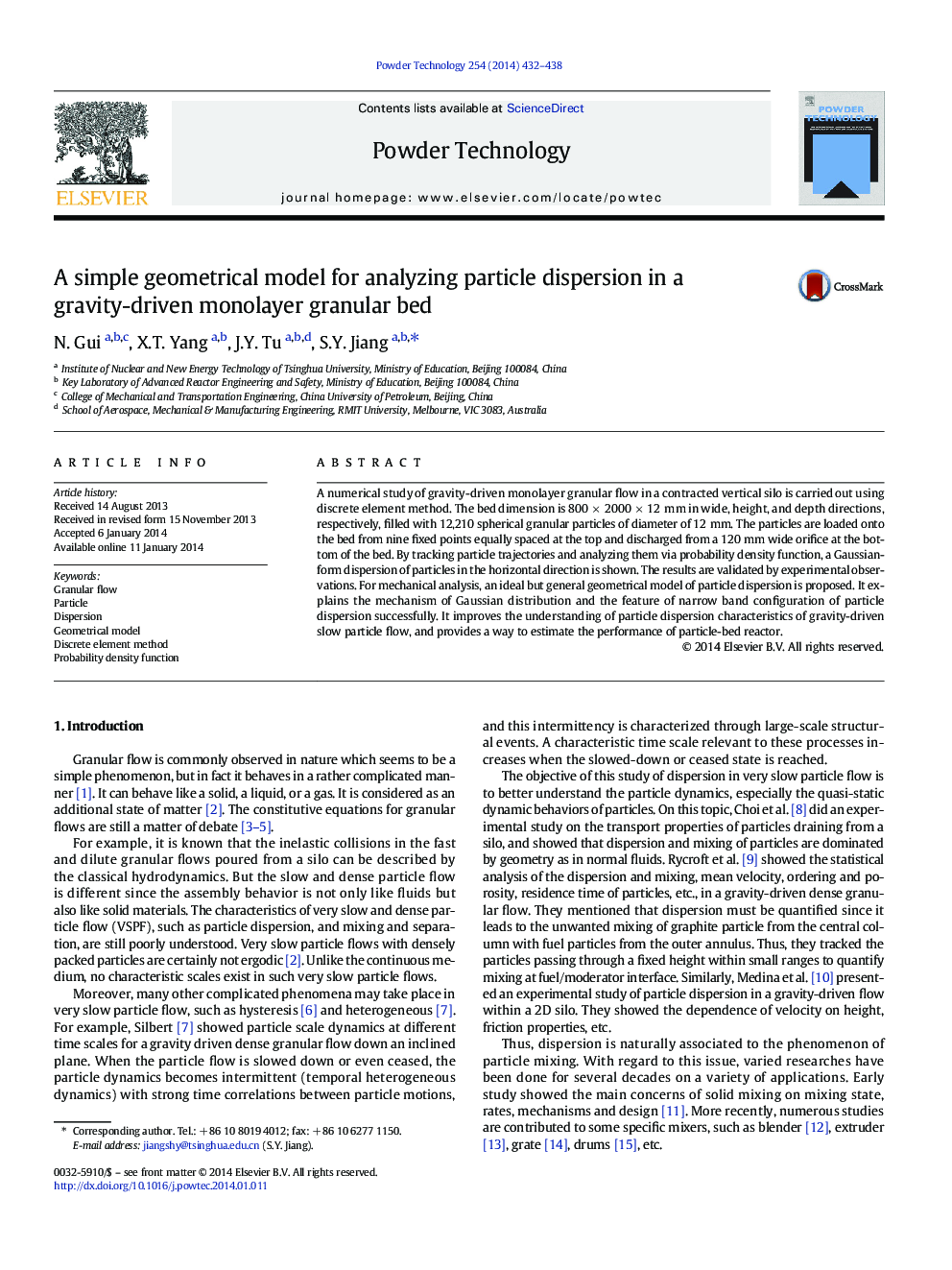| کد مقاله | کد نشریه | سال انتشار | مقاله انگلیسی | نسخه تمام متن |
|---|---|---|---|---|
| 236271 | 465666 | 2014 | 7 صفحه PDF | دانلود رایگان |
• Particle dispersion in gravity-driven silo bed is studied and analyzed by DEM.
• Gaussian-form dispersion of particles is shown and validated by experiments.
• A geometrical model is proposed to explain the mechanism of Gaussian distribution.
• The narrow band-shaped dispersion is explained by an ideal dispersion process.
A numerical study of gravity-driven monolayer granular flow in a contracted vertical silo is carried out using discrete element method. The bed dimension is 800 × 2000 × 12 mm in wide, height, and depth directions, respectively, filled with 12,210 spherical granular particles of diameter of 12 mm. The particles are loaded onto the bed from nine fixed points equally spaced at the top and discharged from a 120 mm wide orifice at the bottom of the bed. By tracking particle trajectories and analyzing them via probability density function, a Gaussian-form dispersion of particles in the horizontal direction is shown. The results are validated by experimental observations. For mechanical analysis, an ideal but general geometrical model of particle dispersion is proposed. It explains the mechanism of Gaussian distribution and the feature of narrow band configuration of particle dispersion successfully. It improves the understanding of particle dispersion characteristics of gravity-driven slow particle flow, and provides a way to estimate the performance of particle-bed reactor.
Particle dispersion in very slow granular flow is of fundamental importance in engineering, such as pebble-bed nuclear reactor. The Gaussian-form dispersion of particles in gravity-driven silo bed is shown via DEM simulation and validated by experiments. The mechanisms are explained by a geometrical model and an ideal dispersion process.Figure optionsDownload as PowerPoint slide
Journal: Powder Technology - Volume 254, March 2014, Pages 432–438
